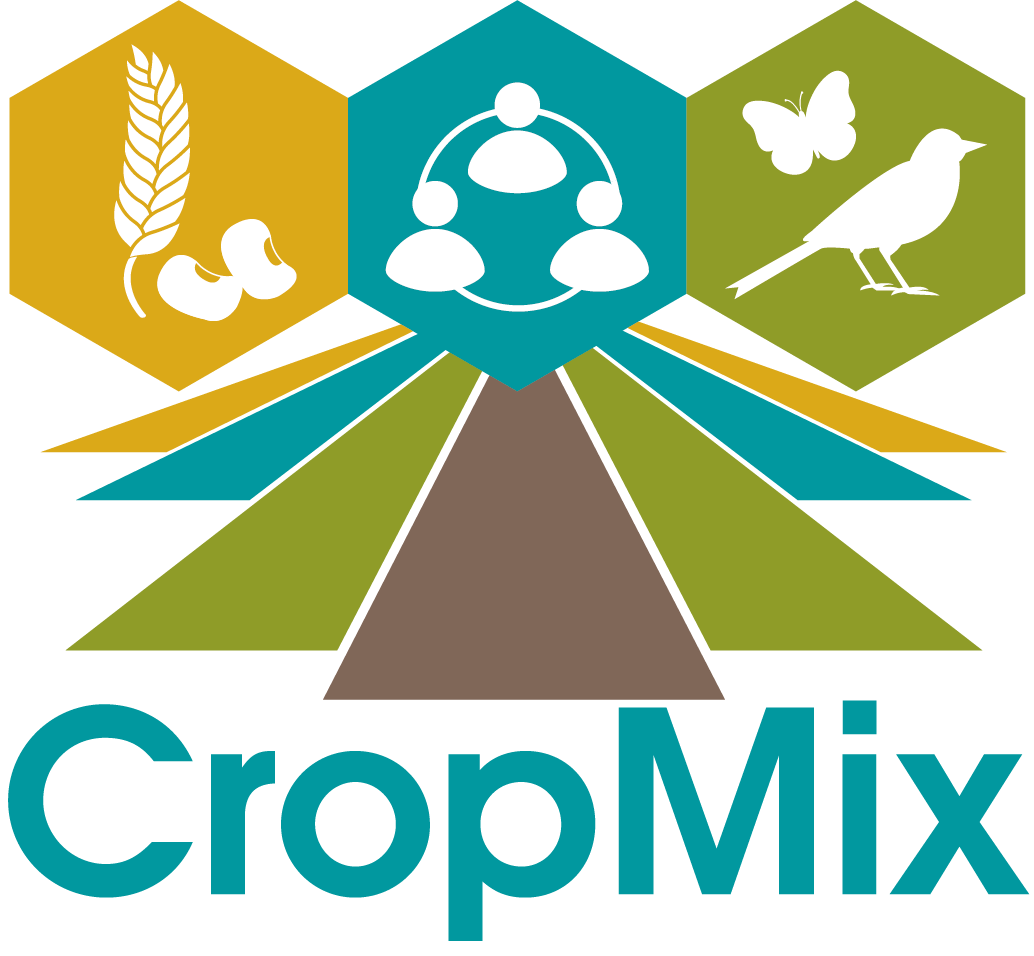Mixed cropping systems bring a promise: more sustainable arable farming. Finding out whether that promise is actually true, is an important aspect of CropMix. But we are doing more. We are also working to accelerate the transition of Dutch arable farming, bby offering an alternative. With CropMix's living labs, we are identifying the challenges that farmers and other parties in the food system experience with mixed cropping systems. We then solve them by organising living lab activities. Each activity revolves around one of these challenges. A group of enthusiastic and interested parties forms, and together they come up with answers. How? By simply doing it.
From monoculture to strip cropping?
One of the biggest questions that has arisen is why a farmer would switch to using mixed cropping systems, such as strip cropping, in the first place. Often, a farmer alters his/her methods based on the advice of a crop advisor. Currently, many advisers do not yet advise farmers to make this switch to mixed cropping. This is because many advisers are not familiar with both the advantages and disadvantages of strip cropping. They do not know the facts. In addition, advisers often work demand-driven and currently few farmers ask for advice on strip cropping. If we want to make it easier for farmers switch to strip cropping, we need to make advisers more familiar with the cropping system and also have them proactively advise on it.
Within the Living Lab activity on the role of farm advisors, we are working on this in two ways. First, we are trying to increase the demand for advice on strip cropping among farmers. To do this, we seek collaboration with trade journals. In the CropMix consortium there are many farmers who make strip cropping a success story. With these success stories, we can properly highlight the advantages and disadvantages of mixed cropping systems.
Secondly, we are working on manageable informative documents that answer the questions farmers specifically ask advisers. Both by researchers and in other Living Lab activities, we are working on these questions. As soon as new knowledge becomes available, we will elaborate them into bite-sized fact sheets that advisers can use quickly and easily when visiting farmers. These include questions such as: what yields do strip cropping provide? But it is also about what investments are needed, for example in the form of different machinery.
The need for new technology
In another Living Lab activity, we are dealing with the question: what technology will be needed in the future? When farmers use mixed cropping systems in the future, what kind of machinery will they need? At the same time, farmers embarking on mixed cropping systems now have challenges with their current machinery, which does not always function within mixed cropping systems.
Within this activity, we started with the concept of irrigation. Several farmers experience challenges in this area, as every crop has different irrigation needs and existing machines are not built for narrow strips. During a workshop with farmers, researchers and students, we brainstormed. From this, three possible options emerged to develop the machinery needed for irrigation in strip cropping. A group of MBO students is currently working on building such a machine.
A next step consists of taking into account the needs of the future. Which players will matter then? What networks should we form? Currently, we at least have contract workers in mind as key players. But above all, we want to know: How can technology make practising strip farming as easy as possible for the farmer, and what do we need to develop to do so? This also aligns in with the research on technological readiness by one of our PhD candidates.
What's next?
So far, we have concretised two of the living lab activities. We are currently setting up more activities, such as:
- Gaining insight into impeding RVO (administrative) instruments;
- Further development of knowledge on natural pest control and its adoption by farmers;
- Setting up a short chain with caterers;
- Building a matrix to avoid problematic combinations between crops and plant protection products (due to drift) in the cropping plan.
We are also setting up a structure where students (MBO, HBO and university) can work on questions that arise from farmers and partners in the Living Labs. This way, we will be answering even more practical questions around mixed cropping systems in the near future!


